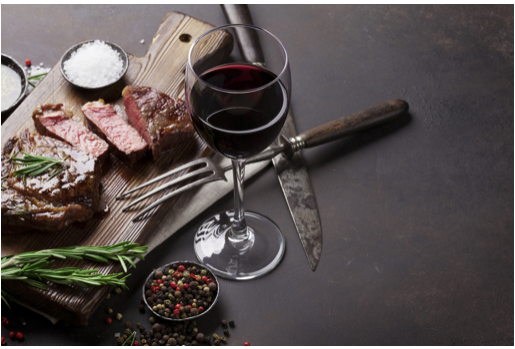Wine and food pairing: 3 essential things to know
By Raichelle Carpio

The history of wine dates back to thousands of years ago and spans vast continents. In fact, there is archaeological evidence of winemaking from various sites in Asia, Africa, and Europe, which indicates the special role of wine in many cultures based on known wine facts and figures.
According to historical records, wine was part of a Roman decree that encouraged soldiers to drink 2 liters a day for good health, and science agrees. Studies have found that alcoholic beverages such as red wine relaxes the blood vessels, while vodka is low-calorie, so it’s ideal for maintaining your ideal weight to complement your efforts to eat healthy at home.
Indeed, wine is a beverage that can be a good pair for various types of food. Here are some tips on how to pair wine and food to help you enjoy the whole experience.
1. Know the pairing methods
You can pair wine and food in various ways to create a balance between your pairings. Your pairing can fall under two main categories: congruent pairing or complementary pairing.
In congruent pairing, you create balance by choosing wine and food that share similar flavors so that one can enhance the taste of the other. For example, you can pair sweet wine with a sweet dish. If you have a red wine that has a buttery aftertaste, a buttery pasta dish can be paired with it. Also, keep in mind that the flavors of the food should not overpower the wine; otherwise, the wine will taste bland.
On the other hand, contrasting pairing involves making wine and food combinations that have no shared flavors. Instead, there should be contrasting and complementary elements between the two, such as a sweet-tasting white wine and a spicy dish. Another pairing for white wine is a salty dish, which can decrease the sweetness of the wine while bringing out the wine’s fruity taste and aroma.
2. Identify the predominant and subtle tastes of each wine
Wines can be grouped into three categories based on their degree of acidity, bitterness, and sweetness.
- Red wines have more bitterness and a little sweetness.
- White, rose, and sparkling wines have more acidity and a little bitterness.
- Sweet wines naturally have more sweetness and a little bitterness.
Based on these taste components, you can come up with the following pairings:
- Bitter or tannic wine can be balanced with sweet-tasting food.
- Wines with greater acidity are best paired with fatty and sweet food.
- The sweetness in wine can use some acidity.
3. Create pairings based on the flavor profiles of food
Another way of creating a wine-food pairing is to consider the flavor profile of food to identify which wine will make the best pair. There are six flavor profiles: salty, fatty, sweet, acidic, bitter, and spicy. Here’s a rundown of how to pair these food flavor profiles with wine:
- Salty food like fried food, pasta sauce, or potatoes can be paired with either sparkling or acidic wines.
- The acidity of the food has to be weaker than that of the wine.
- Fatty food goes well with wines that have bitter tannins, which can soften the fat within the meat and bring out its flavor more.
- Bitter food should never be paired with bitter wine because that flavor profile will only be enhanced.
- Sweet food and sweet wine make a good pairing, but sweet food paired with bitter wine will only enhance the wine’s bitterness.
- Spicy food pairs well with sweet or off-dry wine, which means there’s a bit of leftover sugar in it.
A few more examples of popular and wine and food pairings are listed below:
- Matching the wine with the sauce, not the meat, produces better-tasting results.
- White, sparkling, and rose wines usually create complementary pairings.
- Red wines usually create congruent pairings.
- White wines are best paired with light-intensity meats like fish or chicken.
- Red wines pair best with the strong and bold flavors of red meat.
Drink, Eat, and Be Merry
At the end of the day, the rule to wine and food pairing can be as simple as drink and eat as you please. If you could choose a wine that you would enjoy on its own, you don’t have to worry if the food pairing doesn’t turn out well. In the same way, if you dislike a particular food flavor, there’s very little that your chosen wine can do for you to enjoy the experience.
About the Author
Raichelle Carpio


Raichelle is a retail assistant manager at Txanton, Philippines. She obtained her Sommelier license with WSET2 by late 2018 and has been working in the hospitality industry over the past 10 years. She has developed special talent for dealing with every kind of clients and is one of the favorite by many fine wine and deli consumers. Her exceptional skills have driven her to the top and the truth is she actually has a real passion for premium gastronomy, beverage, and service.





